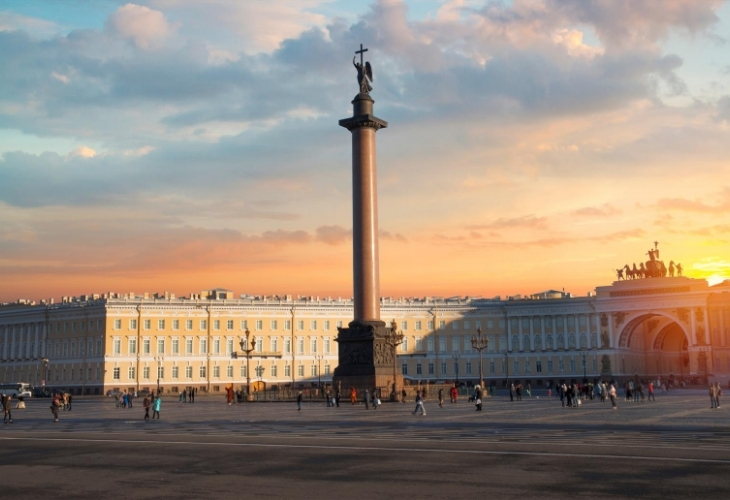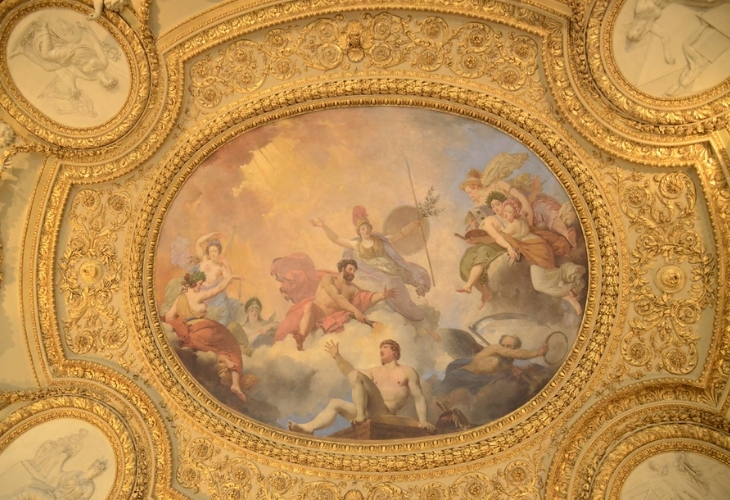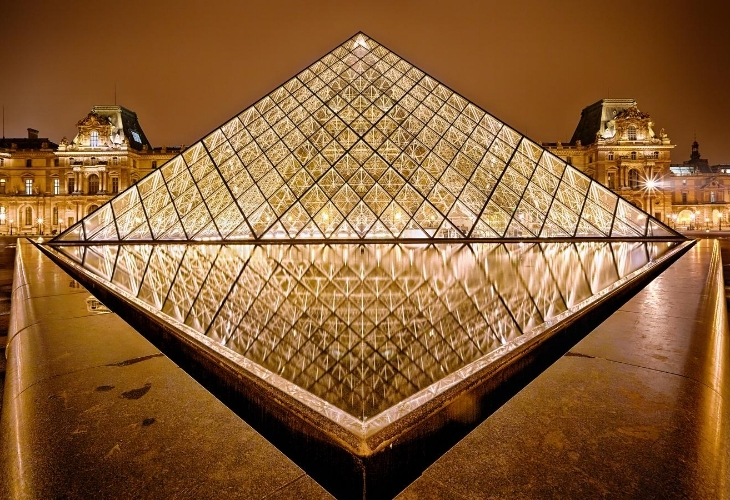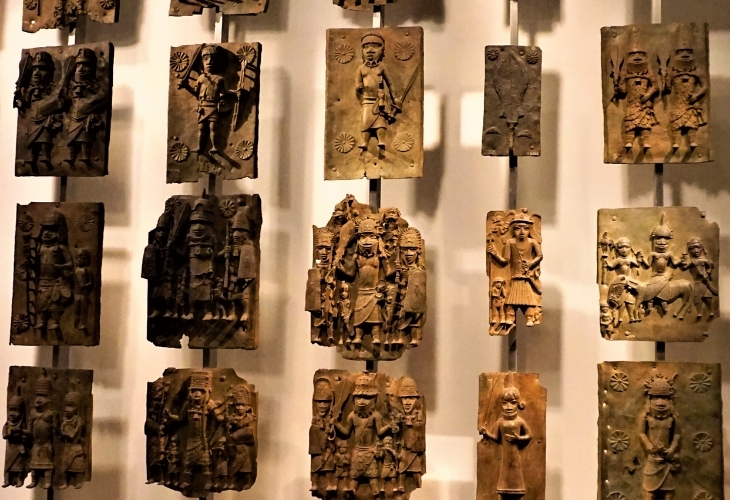5 Must Visit Museums in the World
These buildings represent our past: where we came from, who our ancestors were and what the older civilizations were all about. In totality, it is the outcome of their life, their decision, their ambition, their art and culture, their faults and weaknesses and most importantly, the trajectory of our evolution.
The exhibits in these museums have been a source of innumerable Ph.Ds., thesis, movies, stories, inspirations for artists and of course, a matter of pride for the state. They are an incomparable school in themselves. We travel for fun and adventure but what completes the travel is when we gain perspective of our roots: the old and new knowledge and path-breaking understanding of the world beyond our own home.
The State Hermitage Museum, St. Petersburg, Russia

The fact that this museum is the second biggest in the world is not the most important reason why it should feature in your must-see list. It is one of the oldest museums, established in 1764, that’s also not the reason why it attracts visitors from all over the world. The fascination is about what the Hermitage Museum represents, and it represents the Russian Empire to the core. Apart from what treasure it holds, the building itself is a point of attraction for its gloriously baroque, white-and- emerald-green structure. Constructed on the embankment of the Neva River, “The Hermitage” houses the Winter Palace, Small Hermitage, Old Hermitage, New Hermitage, Hermitage Theatre and General Staff Building.
The first building of this complex was the winter residence for the Romanovs: The Royal family, ordered by Empress Elizabeth hence the name “Winter Palace”. Ironically in this vicinity, hermitage or “l’Ermitage” was only a small palace built for Catherine the Great when she came to power, a place for solitude like a hermit’s residence and Winter Palace had a private gallery to display Catherine’s acquisition of 255 paintings from Germany. Later as the collection grew, more annexures were built, and the word hermitage was adopted for the entire complex of six building which occupies 719,480 sq. ft.

The museum houses over 300 million exhibits. One of the world's largest art and antique collections has sections dedicated to classical, renaissance and modern collections of paintings, sculptures from Italian, English, Russian, Flemish, Spanish, Dutch, French artists etc. Today, inside the Hermitage, you may find paintings by Caravaggio, da Vinci, Raphael, Rembrandt, Tiziano, Van Dyke, Rubens, Matisse, Renoir, Monet, Van Gogh, Dega, Snyders, sculpture by Michelangelo and many other world-renowned artists.
There are massive rooms dedicated to Classical antiquity, Egyptian antiquities, Treasure Galleries, Numismatics, War gallery of 1812, Peacock clock, Leonardo da Vinci Hall, The Raphael Loggia. Jordan staircase, Small Throne Room (also known as the Peter the Great Memorial Hall), The Pavilion Hall in the Small Hermitage, George’s Hall (the Large Throne Room) and Private Royal Chambers, Gold drawing-room, Italian skylight hall, Armorial Hall and much, much more.

Suggestion – Don’t try to see everything in one day, it's not possible. Plan ahead and hire a good guide. It’s worth the money spent.
Opening Times:
10.30 – 18.00: Tuesday, Thursday, Saturday, Sunday
10.30 – 21.00: Wednesday & Friday
Closed: Monday
Egyptian Museum, Cairo, Egypt

The Egyptian antiquities are so phenomenal that all the world's biggest museums have dedicated a segment just for its display. All great empires highly coveted Egyptian artefacts; as a result, they were often subject to plundering and looting from the country’s many archaeological sites. Sometimes the artefacts were used as an official trade between countries, sometimes offered as a token of friendship and many times, they changed hands as the clandestine dealings amongst poachers. Whatever the transaction may be, the Egyptian antiquities somehow always found their way in many private collections, museums and political offices.
To pay a visit to the world-famous repository of Egypt's treasure in its homeland is only befitting. The collection represents the political, symbolic, and cultural role in the many-centuries old history of the Egyptian civilization, especially of antiquities of the Pharaonic and Greco-Roman periods. It holds more than 120,000 items, including some 1,700 items from Tutankhamen's tomb and the solid-gold mask that covered the pharaoh’s head.

Today there are two museums in Egypt. The first one -“Egyptian Museum”, was commissioned in 1858 at Bulaq. The collection was kept in the Giza (Al-Jizah) for almost a decade and relocated to the present location at Tahir Square in 1902. However, the building and location presented some challenges along the way - space constraints with only 15,000 sq metres for usage and some clever thefts, to name a few. The second is the brand new “Grand Egyptian Museum” (GEM). It is to open in late 2020 or early 2021 and is speculated to be one of Egypt's crown jewels. It is a huge, spacious, modern structure near Giza Pyramids with a state-of-the-art exhibition. It has already taken away the splendid Tutankhamun collection from the Egyptian Museum; gradually, a lot of celebrated collection will be shifted to GEM.

Grand Egyptian Museum Under Construction
Opening Times:
Mon-Wed 9 am-7 pm,
Sun & Thu 9 am - 9 pm,
Fri & Sat – 9 am - 4 pm
Le Louvre, Paris, France

The Louvre or Musée du Louvre is the biggest museum in the world today, with 782,910 square feet of museum space on the banks of the River Seine.
This marvellous baroque architecture is the reminiscence of French imperialism and is the home to Leonardo da Vinci’s Mona Lisa (c. 1503–19). As happens with many great monuments, this structure has seen a fair share of constructions, dismantling and reconstructions. The Louvre, as we know it today, was first constructed as a fortress in medieval style for defence against the English in the 12th century. Over a few centuries, the purpose shifted, and it became a residence for Charles V in the 14th century. When Francis I ascended to the throne around 1546, he renovated and added to the existing castle in French Renaissance style. Known as a Renaissance patron of the arts, Francis I acquired great collections of painting and antiquities, which were housed in the palace, and it was around this time the construction of the present Louvre started to take shape.

In 1682 the louvre palace mainly became a showcase of the royal collection. By then, the Versailles had been renovated and expanded and was ready to receive Louis XIV, artefacts who had decided to shift royal base there. Louvre also served as a residence for artists, under Royal patronage for many decades. In 1793 part of the Louvre became a public museum. It’s an infamous year in the French revolution since it was also the year when Louis XVI and his wife, Marie Antoinette of Austria, were extracted from Versailles, confined in Tuilleries Palace and eventually guillotined.
From 1802 - 1815 Napoleon renamed the louvre as the “Napoleon Museum” and added a huge collection of arts from the spoils all over the world; it was his vision what Louvre is today.

There are three entrances; the main entrance at the pyramid, the Carrousel du Louvre, and the Porte des Lions. The Museum consists of three wings: Denon, Sully and a renovated Richelieu, which was the former office of France’s Ministry of Finance. The collections are distributed in 8 sections. You can spend the whole day exploring the Paintings, Sculptures, Egyptian Antiquities; Islamic Art; Near Eastern Antiquities, Greek, Etruscan and Roman Antiquities; Prints, Drawings and Decorative Arts. The objects in the collections range in date from 5,000 B.C. to the 19th century.

Most famous pieces are Eugene Delacroix's "Liberty Leading the People," Jacques-Louis David's "The Coronation of Napoleon," "Venus de Milo," and "Winged Victory," Antonio Canova's "Psyche Revived by Cupid's Kiss," da Vinci's "The Dying Slave” and “The Virgin and Child With Saint Anne," Victor Hugo's "Les Miserables."

There have been disputes between France and non-westernized countries contesting that some of the items on display should be returned to them as they were looted from their country. France seems a bit receptive for restitution in this matter and has stated that “African heritage can no longer be the prisoner of European museums.”
Opening Times:
Mon, Wed, Thurs, Fri, Sat, Sun - 9 a.m.– 6 p.m.
Tuesday: Closed.
Rooms begin closing at 5:30 p.m.
British Museum London, United Kingdom

The British Museum, established in 1753, is somewhat controversial and rumoured to be the world's largest receiver of stolen goods. Many countries are calling out to the museum to return their property that was stolen from their country.
1:- Egypt wants its “Rosetta Stone” back which is British Museum's priced stolen possession.

2:- Nigeria has repeatedly been asking for its Benin bronzes.

3:- Easter Island wants its spiritually significant “Moai” head statue back.
4:- Australian Aboriginals want their Gwaegal shield.
5:- Greece wants its “Elgin marbles.”
6:- China has been asking for their artefacts looted in the 19th century.
7:- India wants her previous “Koh-i-Noor” diamond amongst many others for decades now, which was seized by the British Empire's East India Company as one of the massive loots during the colonial era. This particular gem is kept in the Tower of London.
British Museum issued a statement saying these treasures "are world heritage objects and are more accessible to visitors in London." Therefore, for now, you will have to visit the museum to see these varieties of remarkable treasures and immersive history of 2 million years; whether you like the political undercurrent or not.

There are seven million objects from all over the world: a collection of Greek and Etruscan Terracotta objects, Sutton Hoo Treasure, some of the most famous sculpted stone shafts of Maya stelae, beautiful turquoise mosaic objects of the Mixtec and Aztec civilizations. Roman glass, sections dedicated to China, Japan, and the South Pacific, sections for the collection of Aboriginal and Torres Strait Islander cultural artefacts and emergency money from WW1 called German "notgeld". One of the most enjoyable areas is the King George Library and "Enlightenment Room", and many more attractions. You can spend almost an entire day just there!
Opening Times:
Daily - 10 am – 5:30 pm.
Friday open till 8:30 pm (only certain galleries)
Closed: 1 January, Good Friday, 24, 25, 26 December.
Origin Centre, Johannesburg, South Africa
This is an extraordinary museum simply because it is a new museum which is about the oldest finds of humanity. Origins Centre Museum motto is “We are who we are because of who we were”. It cannot be said any more appropriately. Located on the University of Witwatersrand (Wits) campus in the archaeology department, this comparatively small museum does not compete with the big shots of the museums league. Still, it holds a special place as it contains what is precious to us all, and that is our origins.
A tour of this museum will take you on an interactive ride through the emergence of human beings and humanity in Africa and subsequent spread-out to the rest of the world. You will see over 4 billion years old fossils records and ancient tools and artefacts, the first human artwork from cave walls and rock engravings and how they were instrumental in understanding the origin of humanity, the evolution of art, symbolism and language in Southern Africa.
Opening Times:
Monday - Saturday: 9am - 5pm
Sunday: 10am - 5pm
It’s recommended that you visit “Cradle of Humankind” (Fossil Hominid Sites of South Africa), located about 50 km northwest of Johannesburg. It contains a complex of limestone caves and has given a large number of hominin fossils ever found, some dating back as far as 3.5 million years ago, which are the oldest finds.
Tags ~ Best art museums in the world, Famous museums in the world, Top 5 art museums in the world, historical artifacts, Best Museums in the world, history of museums












